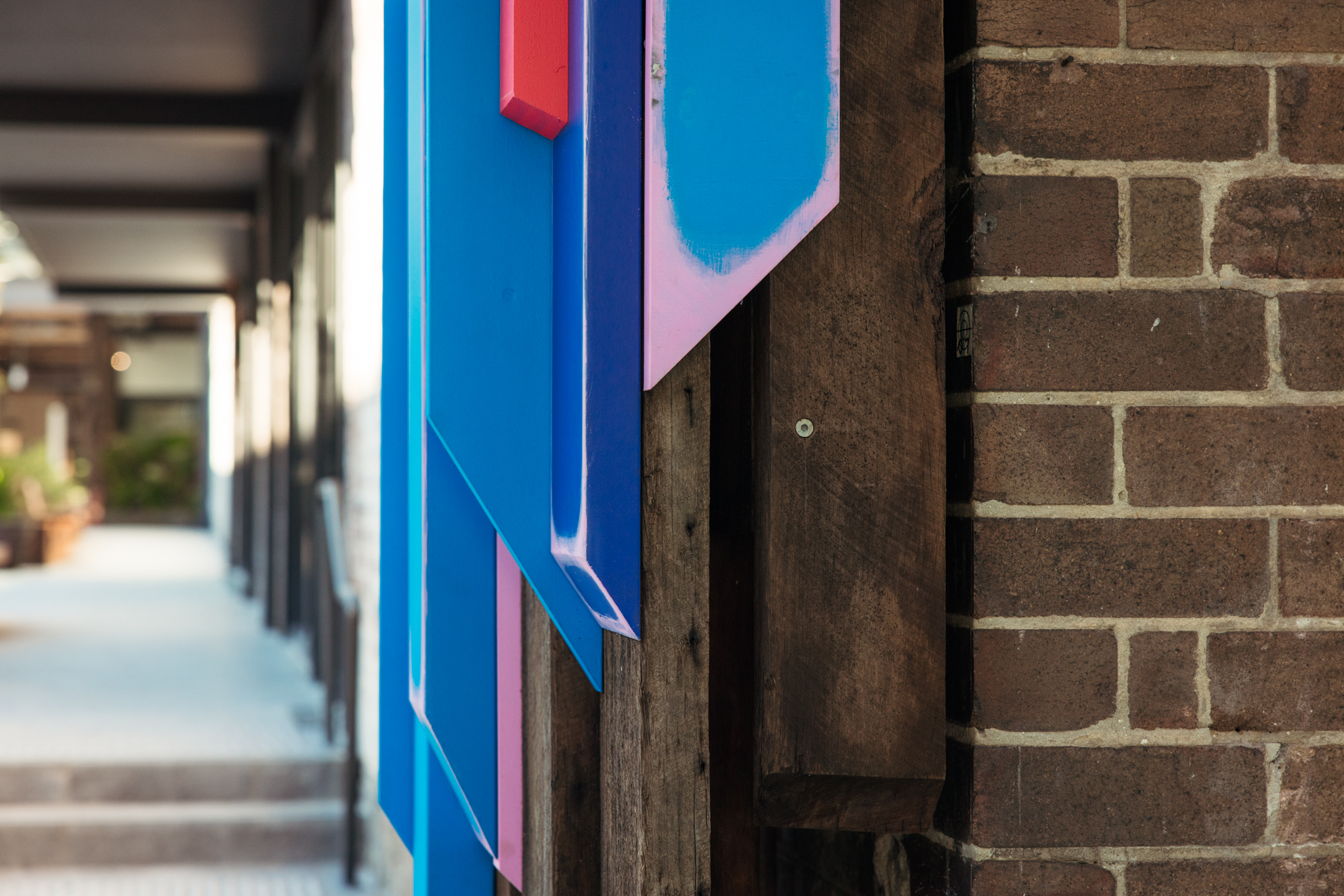In collaboration with long-term client Goodman, Art Pharmacy has facilitated the implementation of a heritage integrated public artwork at Rosebery Engine Yards.
As part of the revitalisation of heritage site Rosebery Engine Yards, Art Pharmacy was engaged to commission a public artwork in line with a considered ‘adaptive reuse’ architectural vision. The 1.9 hectare development is one of the largest single storey floorplates in Sydney and is located in the south of Sydney, six kilometres from the central business district.
Heritage architectural features include soaring sawtooth ceilings, retained timber framework and exposed brickworks, to ensure that the industrious spirit of the former engine works is reimagined for a new chapter as a mixed use commercial and retail precinct.
Art Pharmacy curated an art narrative centring around the contemporary interpretation of the engine works’ industrial past. The narrative, ‘Engine Yards Reshaped’ provided the artist with the opportunity to respond to the overarching theme of industrial heritage through the lens of their personal practice.
The art procurement process invited artists to closely attend to the site’s history and the new chapter that it is now entering through the re-development. It also required Art Pharmacy’s understanding and incorporation of public art principles, especially the framework of cultural identity, sustainability and innovation particular to the City of Sydney’s Public Art Policy (2016).
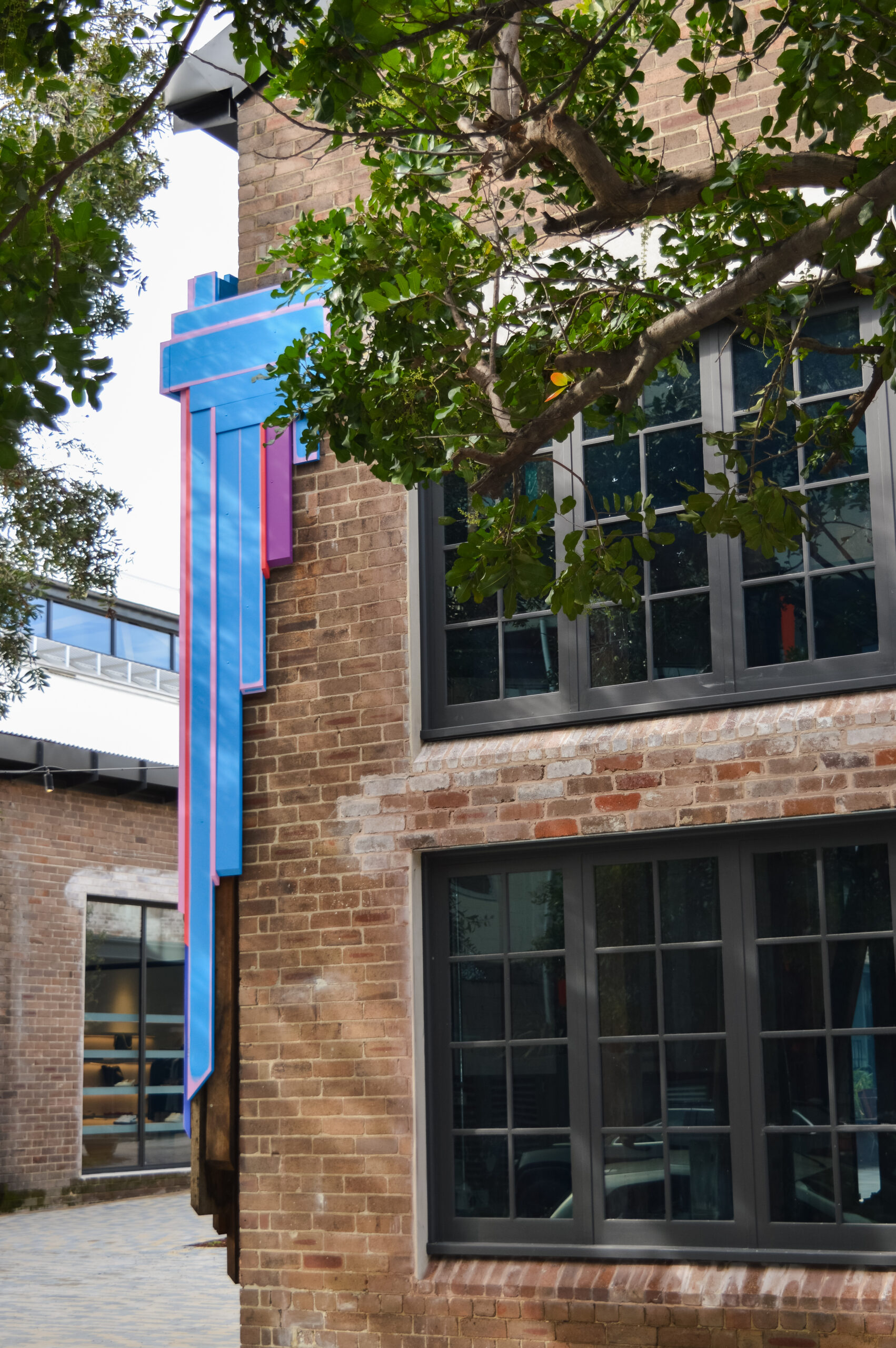
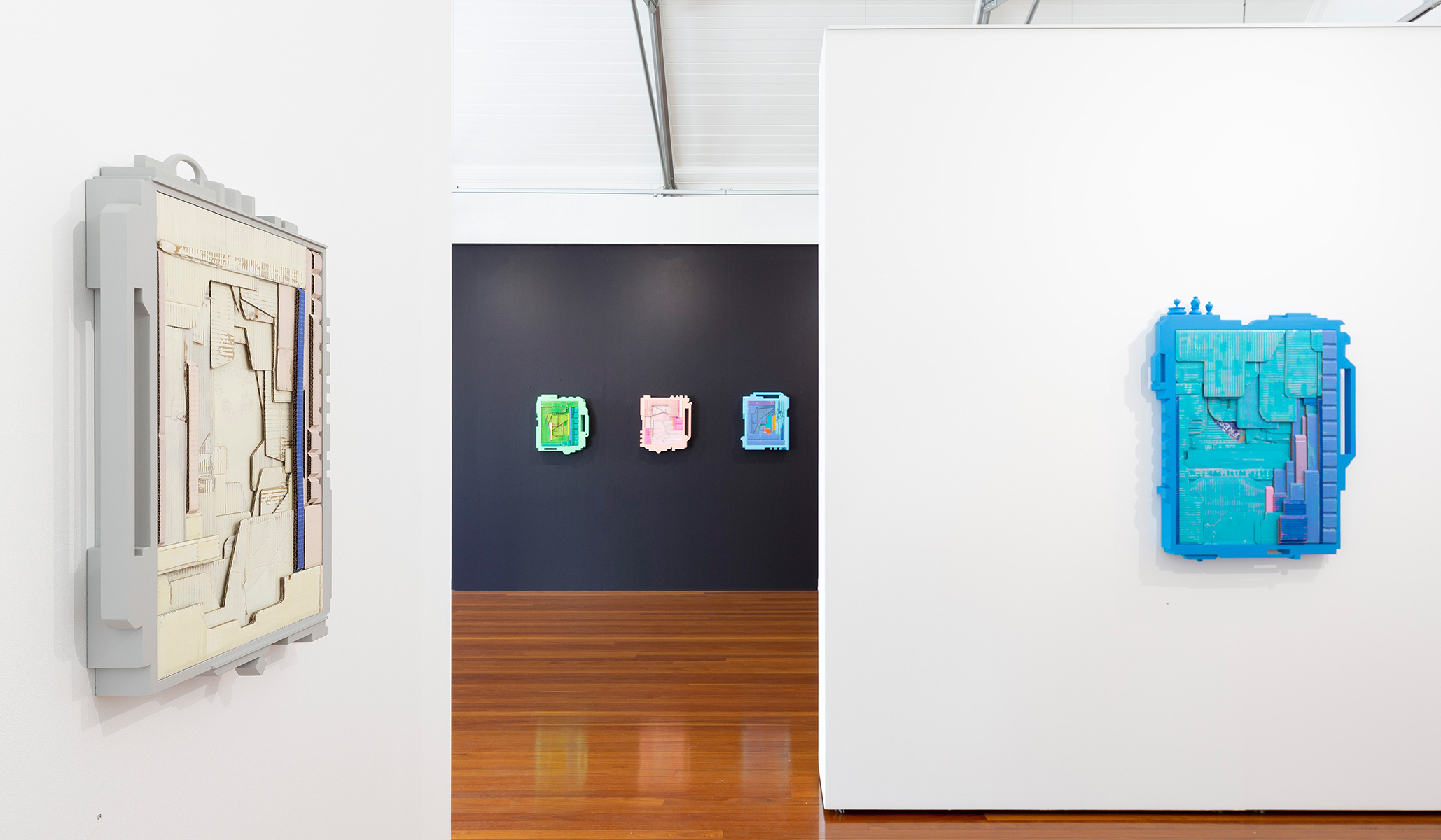
The chosen artist, Patrizia Biondi, is a multi-disciplinary visual artist based on Gadigal land, working predominantly with salvaged resources. Biondi has developed a body of paintings that are intricate and architectural, created mainly out of salvaged materials. Biondi repurposes materials including paper, cardboard, plastic and ceramics by cleaning, painting, cutting, sanding, smoothing, assembling, constructing and varnishing the salvaged parts, to transform them into beautiful art objects and elucidate new histories for these discarded objects.
Her labour intensive transmutation of recovered materials is a fitting response to the adaptive reuse at the heart of Rosebery Engine Yard’s project.
Biondi’s proposed artwork, Timber Tapestries – Stories Covered in Grain, consists of multiple overlapping lengths of coloured timber and is her first artwork at such a large scale. Each length has its own character and is totally unique. As the paint penetrates the gaps and crevices of each piece, it melds with the surface and takes on its character. This results in many lengths of timber that blend beautifully together in unity yet retain their individuality. Such a notion reflects the idea of a place that gathers groups of people whose interests, backgrounds and ideas happily co-exist, no matter how different.
The concept was refined in collaboration with the architects, heritage and lighting consultants. This ensured a refined concept that incorporated the existing timber from the development. Group GSA architects and Nimbus Architecture and Heritage saw the artwork’s materiality as connecting to the previous tenants at the site who laminated timber, Frederick company, and aligning with other heritage interpretation artworks proposed for the interiors at the site.
After several stages of detailed design and fabrication, Timber Tapestries was installed at the Dunning Avenue entrance to the Engine Yards. The visual elements offer the viewer a form that recounts long-standing and ongoing histories and narratives that sometimes converge and sometimes contrast but are all inextricably part of Rosebery’s story. The aged aesthetic of the timber is emphasised against the contemporaneity of the fluorescent paints.
Art Pharmacy is excited to unveil Patrizia Biondi’s first public artwork after an involved and rewarding collaboration.
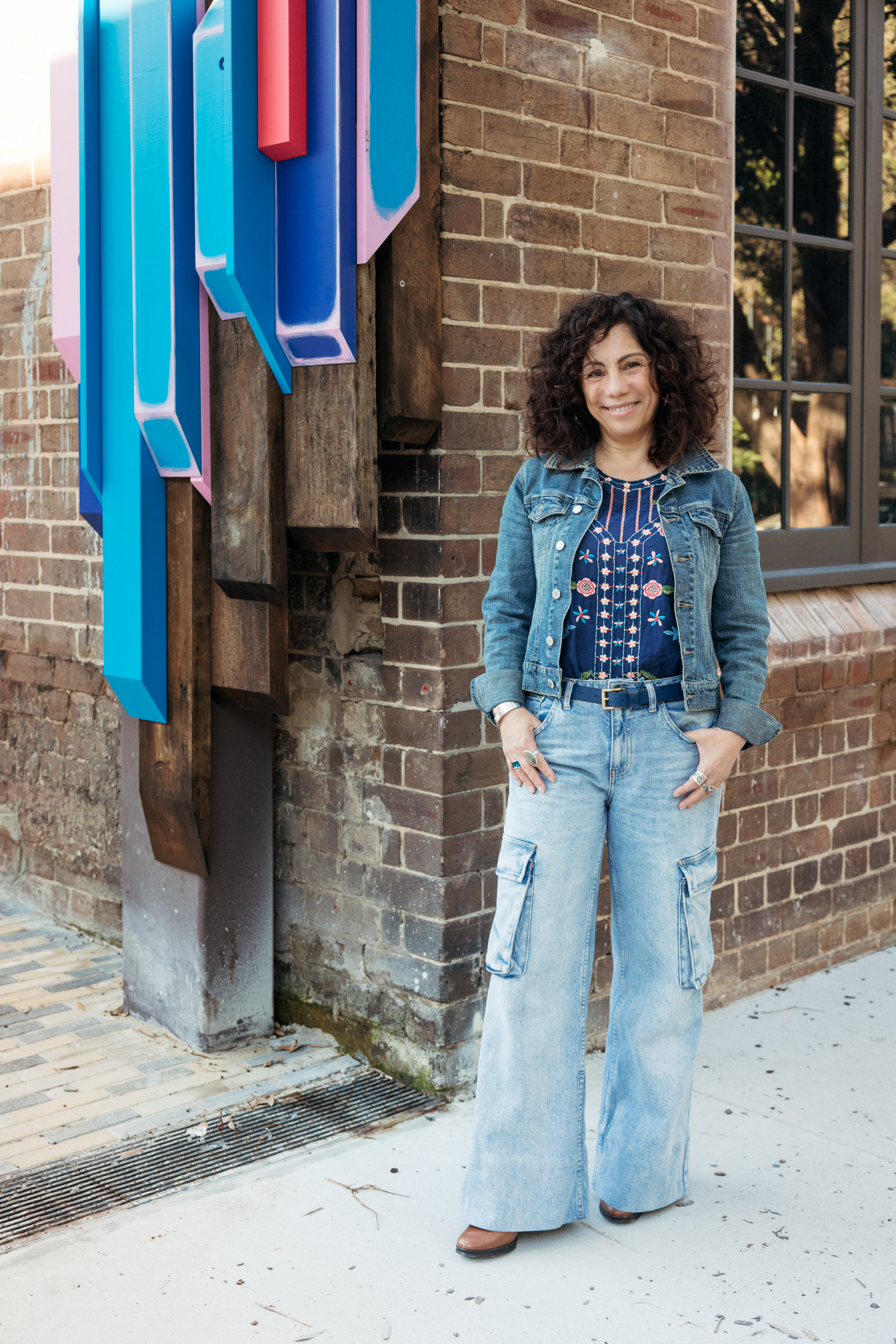
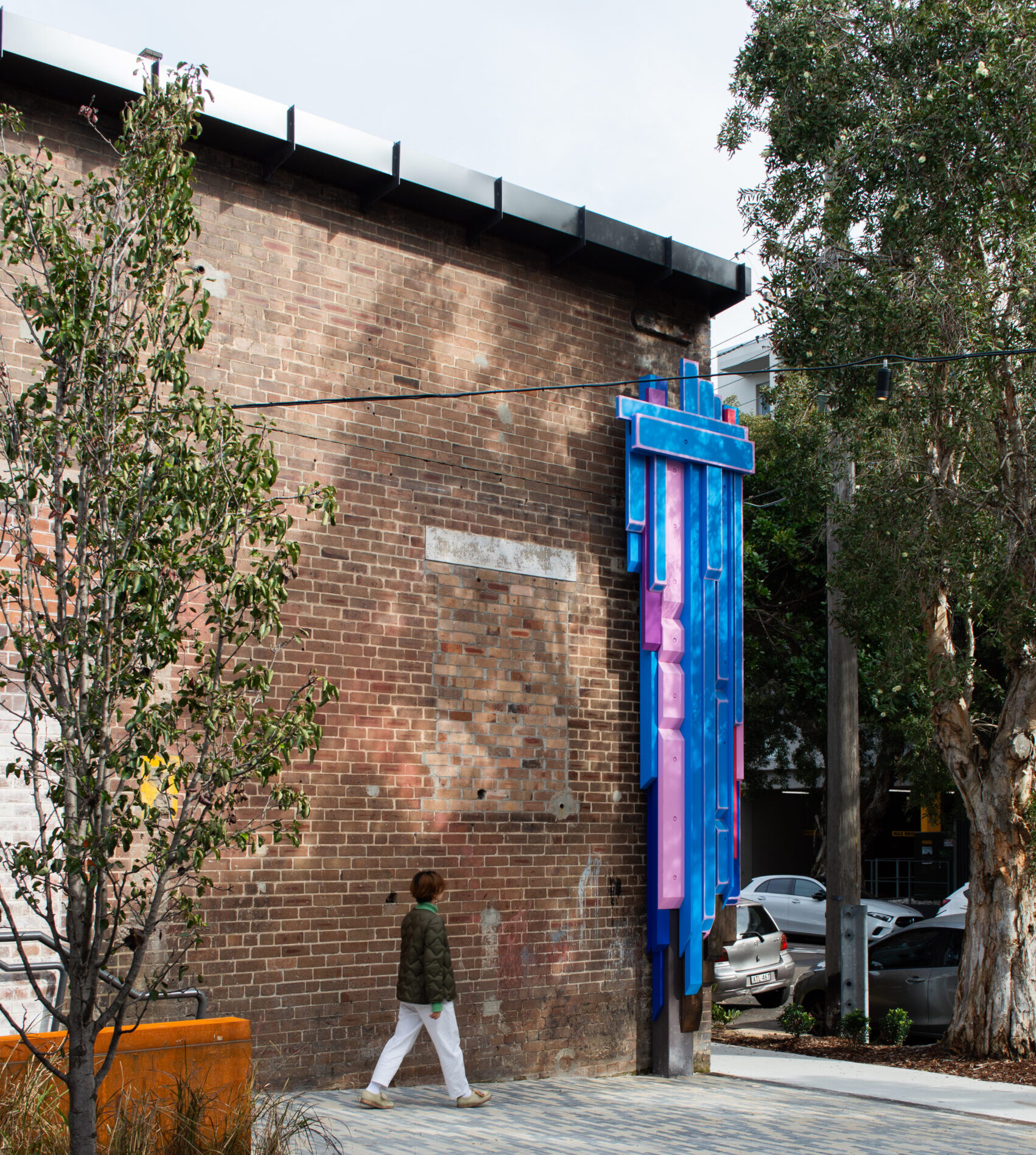
Standing over 6 metres tall on the threshold of Rosebery Engine Yards for both tenants and community alike to wonder at, Timber Tapestries is an elegant and intricate ode to the history of Rosebery Engine Yards and the new chapter that is unfolding with its architectural and commercial renaissance.
—
Special thanks to Patrizia Biondi, Caroline Comino, Studio Elliot Goodman, Group GSA, Taylor Construction and The City of Sydney for making this project possible.
